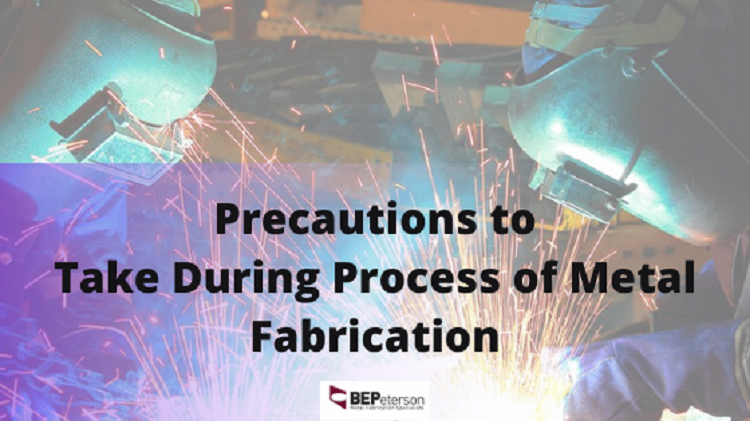Metal fabrication is one of the oldest manufacturing processes in the world. Although it has evolved over the years, it still requires a significant amount of training and practice to master. Today there are various types of automated equipment used for the purpose of metal fabrication. While the metal fabricators themselves are trained and skilled, there are certain common mistakes that happen during the metal fabrication process. These mistakes may escalate while dealing with high pressure and high-temperature industrial applications, sometimes endangering the lives of people working. Therefore, this post sheds light on the mistakes that are essential to avoid during metal fabrication.

Precautions to Take During the Metal Fabrication
The mistakes to avoid during the metal fabrication process involve not taking the necessary precautions to ensure safety. Therefore, to avoid common yet hazardous mistakes, the metalworkers are expected to be cautious about the following factors:
- Making Pseudo-assumptions: Metal fabrication is a mechanical process that impacts several industrial applications. The performance of any equipment will depend on its construction and reliability of the integrated parts. Every business has different specifications when it comes to metal fabrication. Therefore, the metal fabricator must avoid pseudo assumptions. Instead he should communicate with clients to understand their technical requirements. This will help reduce manufacturing defects, honor the deadlines, offer the right quotation, and so on.
- Incorrect Material Usage: Although most metal fabrication facilities use cheap, yet durable materials, their lack of understanding of them will be a big drawback. Hence, during the discussion phase, they must reach in consensus about the type of material to be used on the basis of the final product requirements.
- Improper Material Storage: The filler materials used for welding during the fabrication are susceptible to corrosion due to ferrous metal compositions. As a result the filler materials must be stored in a moisture-free place. If not stored properly, defective metal filling can occur. Binders will then be required in a high amount. Therefore, material storage has to be done cautiously.
- Improper Arc Striking: Arc striking is performed to produce heat for welding. However, if the arc is marked incorrectly, it might damage the metal workpiece. Thus, the welders must pull the weld tool away before the filler material itself sticks to the wrong arc location. Incorrect arc striking may lead to a high amount of material waste.
- Technical TInflexibility: Metal fabrication is a process that involves multiple techniques. These techniques may vary depending on the application. Inflexible metal fabricators may stymie the fabrication process. Fabrication techniques must tailored to a specific job and workers need to be versatile.
- Inefficient time scheduling: Metal fabrication is a process that relies on factors like material, work consistency, temperature, pressure, and time. The fabrication of a metal is a time-consuming activity as the filler metal and binders take time to settle on the application spot. Rushing the job without scheduling proper lead times increases the risk for accidents. The fabrication process must be properly scheduled for productive results.
Error-free and quality metal fabrication comes from decades of experience. This is why it is always recommended to partner with a trusted sheet metal fabrication company when it comes to metal fabrication tasks. BEPeterson is a manufacturer of non-ASME and ASME pressure vessels, tanks, furnaces, vacuum chambers, and so on. The company is ISO 9001:2015 certified and has been providing custom fabrication services for heavy gauge equipment and metal parts since 1935.
